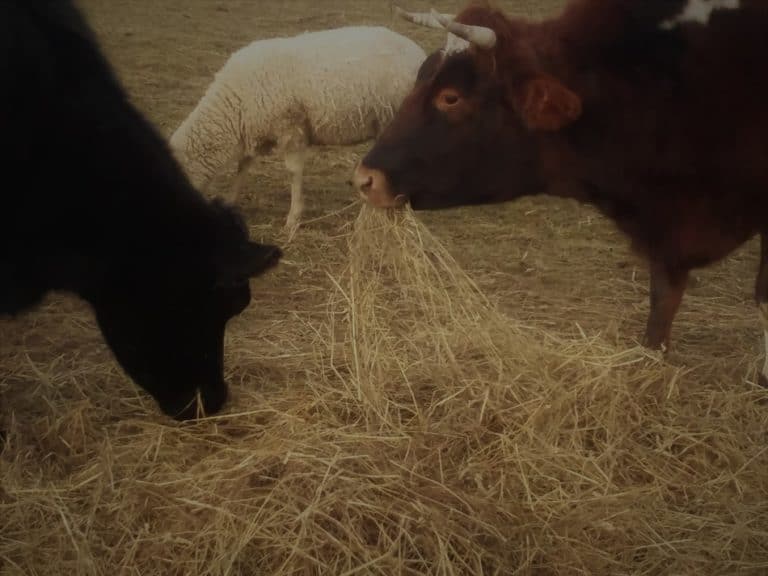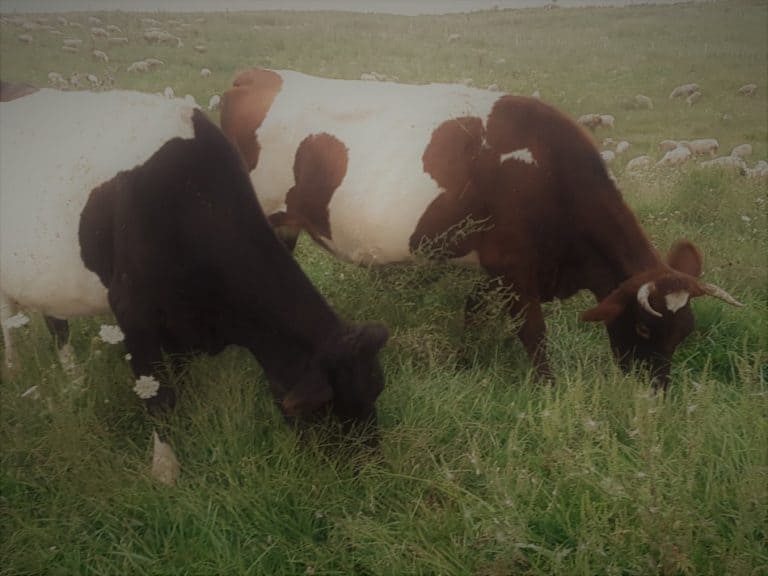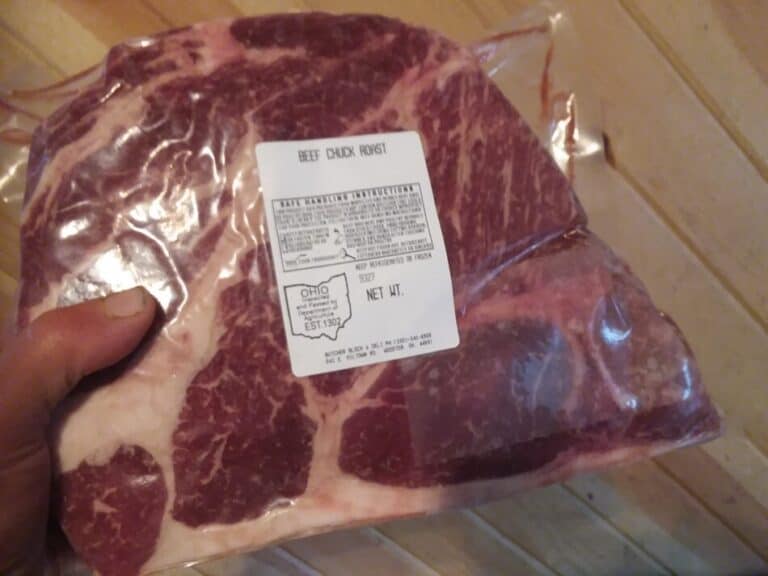Cattle Implants: What Are They And Should You Use Them?
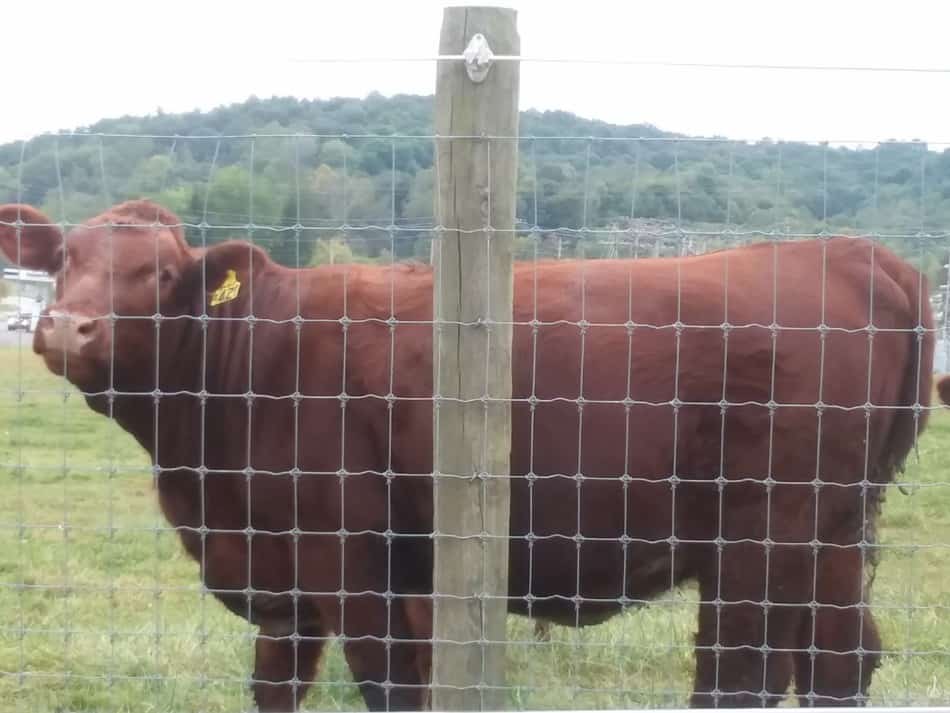
The use of growth promoting implants in cattle is a hot topic. Anytime a topic with this much energy behind it comes up there will be tons of emotion and not too much in the way of facts.
This article will give you some of the facts surrounding cattle implants so you can decide to use or not use them for yourself.
Cattle implants are growth stimulants used to make beef cattle intended for slaughter grow faster and more efficiently.
I want to say upfront that we do not use implants in our cattle, not now or ever. I do not think cattle implants are needed or even a good idea.
This is actually a difficult article to write since parts of it, especially if taken out of context or used in isolation, could look like I am in favor of implanting cattle-I’m not.
So, why am I writing this article? Because you have a right and a responsibility to figure out what you are doing with your animals and why you are doing it.
You need to choose, not let other people or agribusiness companies tell you what is right. In order to choose you need to have information, reliable information.
Read through the information and think about it for yourself. Let’s get cracking.
Is Raising Your Own Beef Worth It? goes over a budget for buying a feeder steer to getting your beef in the freezer.
Cattle implants are growth stimulants
Implants are small pellets that contain a growth stimulant that is slowly released over a period of time. Implants work by increasing circulating levels of somatotropin and insulin-like growth-factor 1. These compounds are produced naturally by the animal and control mechanisms that regulate growth and feed efficiency.Jan 29, 2015
The real facts about cattle implants and their value | Farm Progress
https://www.farmprogress.com › livestock › real-facts-about-cattle-implants-…
Cattle implants are growth stimulators given to young cattle in order to increase their weight gain per day.
The implant itself looks like a small hard pellet or a fat grain of rice.
Cattle implants last 75-200 days
How long the implant lasts depends upon the brand, with a good range being anywhere from 75-200 days.
That’s a pretty big spread, so do the math on exactly what you are getting for your money.
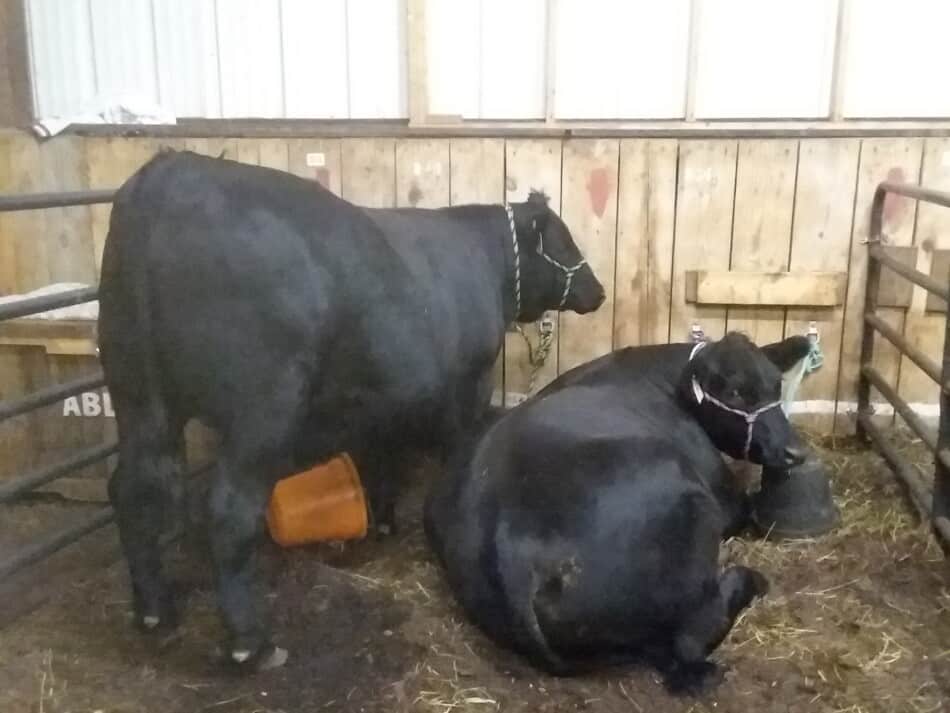
You can implant heifers
Economics for implants offer one of the highest possible returns on investment, second only to products that reduce morbidity and prevent death. Examples from the links below explain how weaning weights can increase by 4%-6% in nursing beef calves that receive a single implant. Growth response is about 20% greater in heifers than steers, so implanting non-replacement heifers is very beneficial.
Drovers.com Implanting Beef Calves At Summer Processing
According to the article quotation above yes, you can implant heifers. However, that is a qualified or conditional, yes.
The conditional aspect being in the last line of the quote, the non-replacement heifer part.
For beef only heifers, the implants will alter the circulating hormone levels of the animal causing her to behave and gain more like a steer.
This is economically important since when a heifer comes into heat she spends a few days riding other cattle and being more restless than normal.
She is not gaining weight during this time, she’s more likely taking a step backwards, since she’s losing weight that will have to be regained.
According to this article heifers that will be kept for breeding stock should not be implanted, only the females that will be raised and sold like steers.
Once again, this only makes sense. Think about steroid use in people, it has some potentially long term effects, that is why it is not available over the counter, it’s doctor only.
Hormones control development and daily functioning of the body, any body, animal or human.
Change the hormones and you change the results you are getting. Hormones are especially delicate when it comes to reproduction.
Reproduction is an amazingly complicated mix of hormones working together in the right amounts at the right time.
You can’t mess with that and expect it to be “all good” later when you want the heifer to act and perform like a heifer again. Don’t implant replacement heifers!
Cattle implants go in the skin of the ear
Implants are put into an applicator and pushed through a larger diameter needle. The needle is placed under the skin of the ear.
Why the ear? Well first off it is easier to get to than a place lower on the body. When the cattle are in the working chute the easiest places to touch (and potentially implant) on the calf’s body are high, like shoulders, head, etc.
Secondly, the ear is not included in any retail cuts, it is thrown away.
This means that any parts of the implant that have not be absorbed by the steer’s system will not be put into the meat.
Thirdly, the implant would work just about anywhere on the steer. It is placed in the ear so it is not close to any of the valuable retail cuts that would be marred.
If it was placed in the shoulder or the back, as examples, the producer runs the risk of imperfections in the carcass. This means less valuable meat, so less valuable steer.
Implant cattle for greater gains per day
Implanted calves usually result in a 10-20% increase in average daily gain (growth rate) compared to non-implanted calves. Moreover, because of the increased feed efficiency, less feed is required which decreases production costs by 5-10%.
Drovers.com
Why implant? There you go, this quote says it all.
If you have not looked into the cost of raising cattle then you may not be aware-the cost of feed is the largest yearly expense, by far, in raising cattle.
Anything that makes the feed you are providing result in faster growth is generally considered to be worth looking into.
Many, actually most cattle producers implant their cattle to get the higher rate of gain per day. The sooner the steer reaches market weight the sooner the farmer or rancher gets paid.
Raising cattle is a business. That means it needs to be profitable, or it is a hobby.
Nothing wrong with cattle as a hobby, just don’t confuse the two when you are counting on the business side.

6 hormones are used in beef cattle
There are six hormones approved for use in beef production. Three are natural hormones (testosterone, estradiol, and progesterone) and three are chemically similar synthetic hormones (melengestrol acetate, trenbolone acetate and zeranol).
Drovers.com
The hormones used vary with the brand. Most that I found seem to have a combination of two or more hormones working together.
Read the label, it will all be there for you. Do some research.
Ask your vet for his recommendations.
Do hormones in cattle affect humans?
In 2013, eighty percent of U.S. cows were injected with hormones to increase the meat production. … In addition, there is no scientific evidence to prove that drinking milk or eating meat from hormone-treated animals affect breast cancer risk.Oct 23, 2015
Do hormones in meat affect human health? – Upstream Downstream
https://upstream.mj.unc.edu › 2015/10 › do-hormones-in-meat-affect-human…
The first quote speaks to the long term proven effects for people as eaters of the implanted beef.
I’m sure there is other information available, I just picked one source of the many available. Once again, do your own research and see what you can come up with.
Make sure you are thinking about the set up of the study and the way the results were tabulated and reported. It’s easy to see what you want to see when looking to support or toast a claim.
Keep to looking for the provable facts.
A quicker way to get the information
Actually, what might be quicker, even though you should still dig deep and unearth the information yourself, is to look for opposing views on the same subject.
Notice which side is listing out facts, not just figures, and which side is throwing in emotion to bolster their fire power.
Heads up on emotion vs. fact regarding cattle
Tossing in emotional arguments means the facts were not strong enough so you need to be guilted into going with the writer’s opinion.
That’s not science, not even close.
500 grams (~ 1 lb) of beef from an implanted steer contains approximately 7 nanograms of estrogen compared to 5 nanograms of estrogen from non-implanted beef. Furthermore, there are many common foods that are naturally much higher in estrogen than implanted beef. For example, 500 grams of tofu contains 16,214,285 times the amount of estrogen compared to the same amount of implanted beef.
Drovers.com Facts About Hormones And Beef
This second quote speaks more to intake of hormones by people through the food we eat. For me the point about tofu is striking.
I recall reading a wonderful book on butchering, written from the perspective of a retail butcher, by Cole Ward.
I mention this book because it had a table listing out common foods and their hormone levels compared to implanted beef.
I borrowed the book from the library network, so I don’t have it here now to reference exactly, but I’ll give you the basics as I recall them.
His information listed hormones in beef and implanted beef to be very close together, just like the information above. Ward’s book then went on to list out other common foods with many times more estrogen like peas.
The comparison that really stuck out in my mind is the next one. The real kicker was vegetable oil (in regards to estrogen content), it blew everything else out of the water!
No surprise, since vegetable oil is actually derived from soybeans, just like tofu.
Cattle implants cost $35 for 24, plus applicator at $24
Taking a quick look through a livestock supply catalog shows the current price for a 24 cartridge pack of implants is $34.99.
There are multiple brands, differing active ingredients and larger pack sizes to choose from, I just picked one to use as an example.
Keep in mind if you decide to buy these you will also need an applicator. The applicator costs $23.95 and should last for multiple rounds.
Should you use implants in your cattle?
You’ll have to decide this one for yourself. As much as I hate to write this, at first glance or on paper the implants could seem like a good idea.
After all who doesn’t want well grown cattle? Faster to gain equals faster to a paycheck.
The real question here: is the fastest growth always better? No, it’s not.
For an easy example, look at cancer: it’s fast growth, actually unusually fast growth. If all fast growth is good then cancer would be good as well, but it’s not.
Personally, I do not like messing with hormones since I believe animals are biologically designed to be healthy.
Healthy animals, cattle included, grow well and are efficient users of their food without me messing around with their hormones. Interference is not needed.
For me, messing with something as basic as hormones means you are not seeing the bigger issue here-something is wrong with your system. Cattle are biologically designed to grow well and be healthy.
If your cattle are not growing well, look at what you are doing that is out of line with their biological requirements.
Want to read the article for yourself?
https://www.drovers.com/article/facts-about-hormones-and-beef
The above link will take you to the article on Drovers.com where the majority of the information from this article came from.
